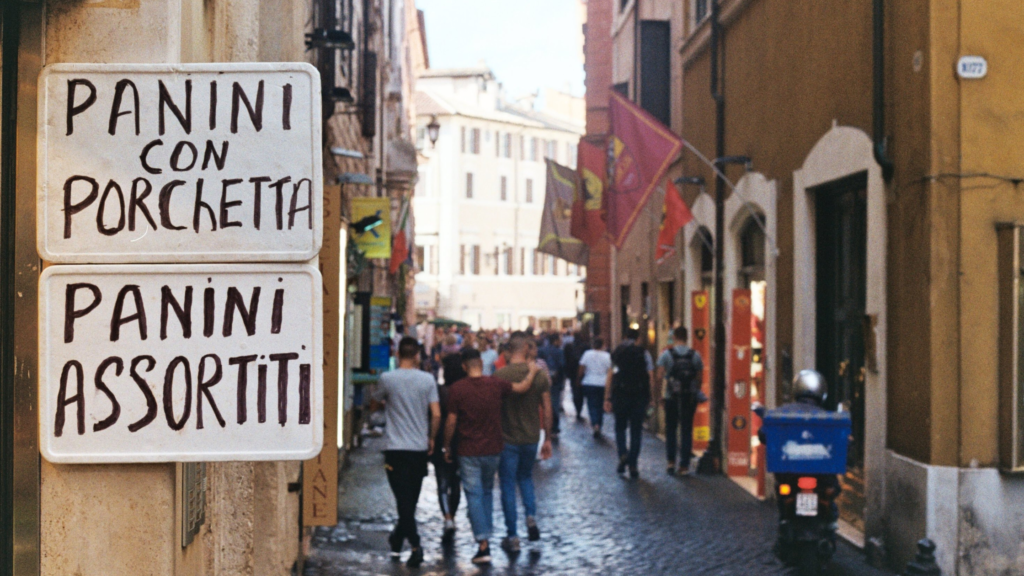Italian Croissant: A Morning Pastry with a Twist
Imagine a crisp, buttery pastry. Its sweet aroma teases your senses as you take a bite, revealing the delicate, pillowy interior. This is the Italian Croissant, more accurately known as Cornetto or Brioche in its home country.
A Brief History of the Italian Croissant
The croissant, as we know it today, traces its roots back to the 13th century Austria, where a pastry in the shape of a crescent was invented to celebrate the victory over the Ottoman Turks. However, the Italian version, Cornetto, has developed its own characteristics, making it a unique delicacy.
Introduction of Cornetto to Italy
Cornetto made its way into Italy through Venice, a port city with a rich history of trade and cultural exchange. Italian bakers, inspired by the Austrian Kipferl, added their twist to it, making it more enriched and sweetened. This gave birth to an entirely new morning habit, the Italian colazione (breakfast), involving a Cornetto and a cup of espresso.
The Rise in Popularity
Over time, Cornetto became the hallmark of Italian breakfast, gaining immense popularity across the country. The simple pleasure of a crisp pastry, combined with the strong, sweet coffee, became a timeless culinary ritual in Italy.
Varieties of Italian Croissant
The beauty of the Italian Croissant lies in its versatility. There is a Cornetto to match every taste, inclusive of every preference and dietary requirement.
Classic Cornetto
The classic Cornetto is characterized by its plain, sugary glaze. It can be enjoyed as is or filled with a spoonful of fruit jam or Nutella.
Cornetto con crema
This divine pastry is filled with a luscious, custard-like cream known as Crema Pasticcera. This cream filling offers a rich, flavourful experience, adding another layer of indulgence to the pastry.
Cornetto integrale and Cornetto senza glutine
Adapting to the growing health-consciousness, Italian bakers have mastered the art of creating wholemeal (integrale) and gluten-free (senza glutine) variants of Cornetto, ensuring everyone can enjoy this breakfast ritual.
The Art of Making An Italian Croissant
The creation of a Cornetto is a testament to the mastery of Italian bakers. It’s a multi-step process that requires patience, precision, and passion.
Ingredients Used
Making a Cornetto requires relatively basic ingredients – flour, sugar, eggs, and butter. However, the key to a perfect Cornetto lies in the quality of ingredients used. The Italians prefer using high-quality, locally sourced produce to create pastries that truly represent the essence of their land.
The Process
The dough is prepared by incorporating butter into the flour, along with other ingredients, followed by a lengthy process of resting and kneading. The pastry is then carefully shaped into a crescent, glazed with egg wash, and baked to perfection. This ensures a flaky crust and a tender crumb, the hallmarks of a good Cornetto.
Experiencing Italian Croissants
The best part about the Italian Croissant is the experience it offers. There’s nothing quite like starting your day by stepping into a quaint Italian café, the air filled with the aroma of freshly brewed espresso and baked Croissants.
In Italy
Every café, from the historical establishments of Rome and Milan to the cosy corner spots in rural towns, offers their unique take on the Italian Croissant. It’s an experience that truly embraces the spirit of Italian hospitality and their love for food.
Around the World
Today, you don’t need to be in Italy to enjoy a Cornetto. Italian bakeries around the world strive to replicate the authentic taste and texture of the Cornetto, allowing a global audience to appreciate this delicious breakfast pastry.
In the end, whether you’re sitting in a bustling café in the heart of Rome or enjoying a homebaked Cornetto at your local bakery, the Italian Croissant is more than just a pastry. It’s a symbol of Italian culture and gastronomy, offering a delightful way to kick-start your day, the Italian way.
The Italian croissant, locally known as “cornetto”, is more than just a breakfast delicacy. Howbeit deeply rooted in history and customs, this morning pastry reveals its very own Italian charm contrary to its French counterpart. The captivating world of cornetto beckons with a unique blend of softness, buttery flavour, and a delightful crunch that lingers longer in memory. Let’s plunge a little more into this flavor-filled universe.
Understanding the ‘Cornetto’: The Italian Croissant
The Italian croissant, or cornetto, boasts a muted sweetness, crispy exterior, and a plush, bready texture that contrasts its French sibling. Essentially, the Cornetto signifies a delicious alternative to the crispy and flaky French croissant, presenting a doughier and softer pastry delight.
The Cornetto and its varied flavour profiles
Unlike the traditional French croissants that skew towards savoury, cornettos can be sweet or savoury. The sweet versions often contain delightful stuffing such as jam, chocolate, custard, or even honey. Savoury ones might hold ham, cheese, or both.
| Flavour Profile | Description |
|---|---|
| Jam | Usually made with apricot, cherry or strawberry jam. Some places offer a wider fruit variety. |
| Chocolate | Rich, indulgent chocolate cream fills these croissants providing a sweet, decadent finish. |
| Custard | An Italian classic, the custard filling, known as ‘crema’, adds a delectably smooth texture. |
| Cheese and Ham | Delightful combination of mozzarella cheese and Italian ham creating a savoury explosion of flavours. |
The Art of Making an Italian Croissant
Making the perfect cornetto requires that ideal balance between skills, passion, patience, and quality ingredients. The baking process is undertaken meticulously, ensuring the pastry comes out light, airy, and layered, with an absolute, mesmerising aroma.
The Italian Croissant in Italian Culture
Brimming with a cultural significance, Italian croissants symbolise much more than a mere breakfast item. They are essentially a cherished aspect of the Italian morning ritual.
Cornetto and Cappuccino: The Italian Breakfast
Nothing embodies Italian breakfast better than a combo of cornetto and cappuccino. Be it an indulgent chocolate-filled croissant or a classic apricot jam-filled one, cornetto accompanies the frothy cappuccino perfectly, outlining a dreamy start to the day.
Celebrating Regional Variations
What’s truly fascinating about the Italian croissant is its versatility and regional variations. Whether it’s the refreshing Cornetto al Limone from Amalfi coast, laden with tangy lemon cream, or the delicate Cornetto con Pistacchio from Sicily, oozing with rich pistachio cream — each Italian region presents its unique, appetising variation!
Engrossed in history, embedded in customs and enriched by regional interpretations, the Italian Croissant or Cornetto extends an alluring gastronomic experience. Next time you find yourself in Italy, don’t miss out on savouring this delightful, buttery treat!







































